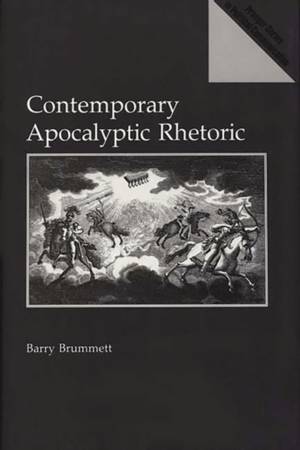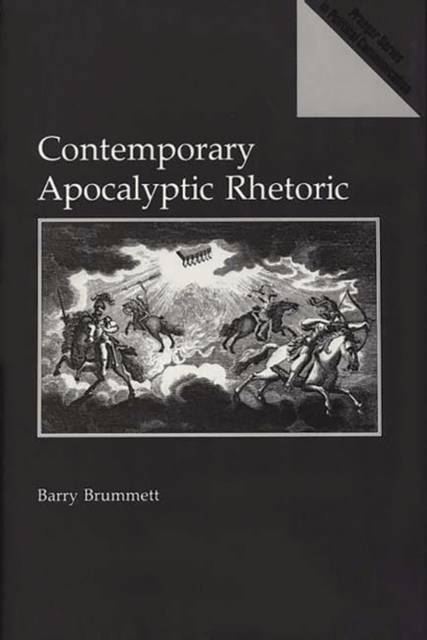
- Afhalen na 1 uur in een winkel met voorraad
- Gratis thuislevering in België vanaf € 30
- Ruim aanbod met 7 miljoen producten
- Afhalen na 1 uur in een winkel met voorraad
- Gratis thuislevering in België vanaf € 30
- Ruim aanbod met 7 miljoen producten
Omschrijving
Intellectuals today cringe when a politician speaks of the Second Coming, the millennium, or the Antichrist. Certain questions naturally arise about those who literally expect the end of the world in our day: Why do they think this? Why do some people believe them? How do their exhortations work to persuade an audience and to move that audience to actions and commitments? These are the motivating questions of Contemporary Apocalyptic Rhetoric, which describes apocalyptic as a rhetorical genre of discourse. Barry Brummett first recasts insights drawn from past scholarly and theological studies to demonstrate their relevance to contemporary apocalyptic, then examines a variety of real apocalyptic to illustrate the ways in which these rhetorical discourses actually work. The discussion focuses on those strategies, arguments, and stylistic features that are peculiar to apocalyptic and that support its social and political claims.
Following an introductory first chapter, Chapter Two describes how apocalyptic rhetoric links a psychological context to an esoteric grand order underlying all of time and the cosmos. Chapter Three compares premillennial and postmillennial apocalyptic on three dimensions to show the different approaches they take to reach their audiences. Chapter Four describes specific rhetorical techniques designed to maintain a mystic persona and urge social and political commitments on audiences. The final two chapters apply the author's theories to secular and religious apocalyptic, both premillennial (Hal Lindsey and Ravi Batra) and postmillennial (Francis Fukuyama). Contemporary Apocalyptic Rhetoric will appeal to readers across many disciplines, including communications, religion, sociology, and psychology.Specificaties
Betrokkenen
- Auteur(s):
- Uitgeverij:
Inhoud
- Aantal bladzijden:
- 208
- Taal:
- Engels
- Reeks:
Eigenschappen
- Productcode (EAN):
- 9780275940829
- Verschijningsdatum:
- 30/11/1991
- Uitvoering:
- Hardcover
- Formaat:
- Genaaid
- Afmetingen:
- 156 mm x 234 mm
- Gewicht:
- 467 g

Alleen bij Standaard Boekhandel
Beoordelingen
We publiceren alleen reviews die voldoen aan de voorwaarden voor reviews. Bekijk onze voorwaarden voor reviews.











